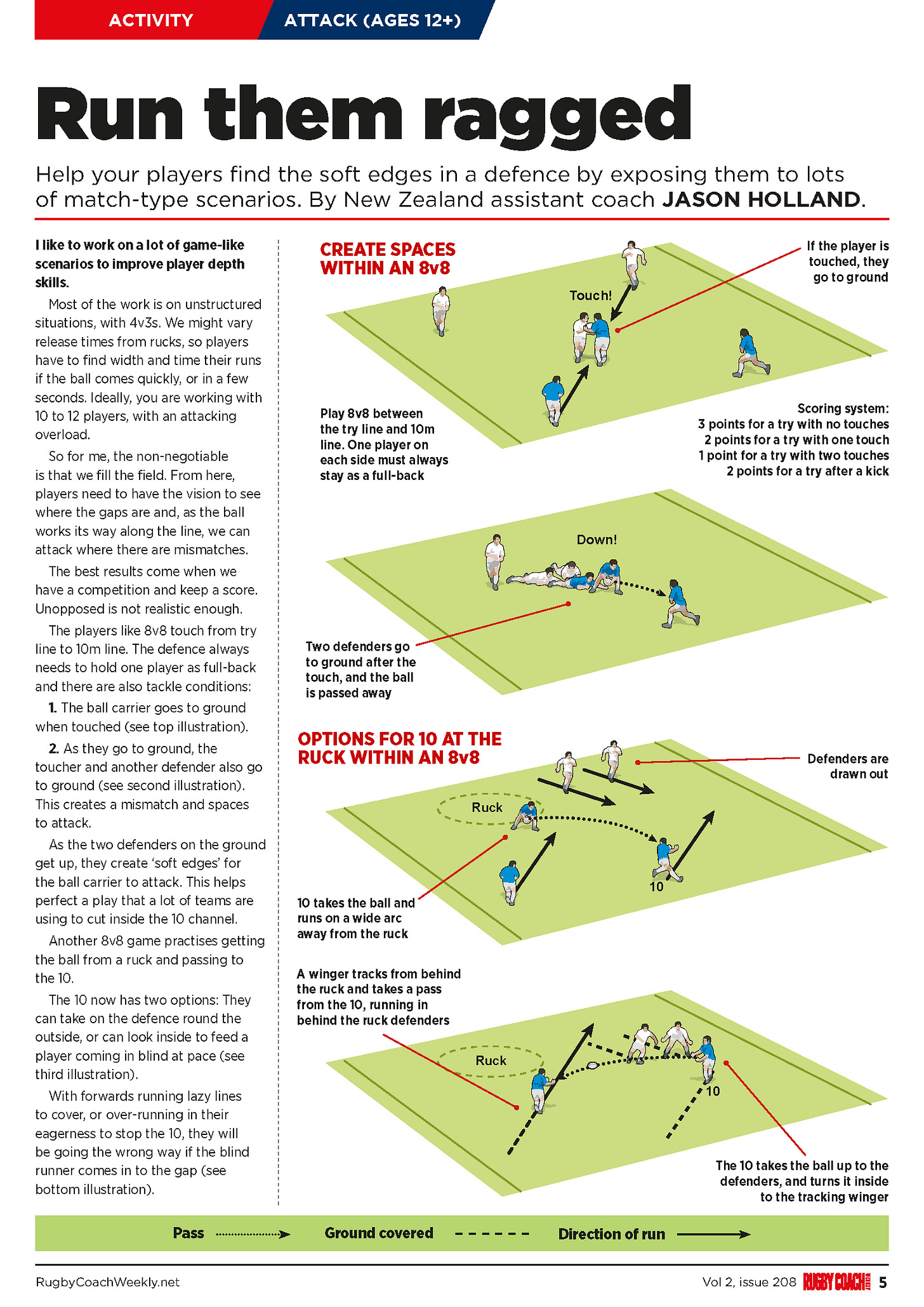Finding the soft edges
Where defences falter for a moment, space appears—if your players see it, they can strike.
A 'soft edge' is a place in the defensive line where there are opportunities for a ball carrier to go through.
Whoever coined the phrase might not have realised what a clever term they came up with.
An edge recognises that an object has come to a finish, like the edge of a cliff or wall.
That means there is something to fall over (bad news, obviously) – or, in the case of attacking opportunities, a potential space to go through.
There are two main edges in a defence. The first is next to the ball source, either at the set piece or breakdown. The second is at the end of the defensive line, where the winger is normally stationed.
Rucks can have soft edges. Quick-thinking scrum-halves look to exploit even the smallest of holes to dart through.
Most teams will work hard to make this ruck edge seamless. In other words, a defender will stand so close to the ruck that there’s no way through.
To create a soft edge at the ruck, the attack has to create very quick ball.
However, plenty of teams fail to capitalise because they wait for the 9 to come in to pass the ball away.
Why not have a forward pick up and go themselves? If that happens a couple of times, the defence soon swarms around the ruck, which inevitably creates spaces elsewhere.
The second edge, the one where the winger stands, is harder to exploit.
That’s because attacking teams are often faced with four or more defenders. And how often have you seen a 5v4 or even a 7v4 work?
It can work, though, if your players run scary lines and the passing is slick enough for it.
The reason why the word 'soft' is useful is because, often, the edge is only temporary. A gap is soon closed if the defence has time. That’s why players must recognise the edge quickly and attack it.
It’s a combination of well-executed skills and decision-making. I’ve used New Zealand assistant coach Jason Holland’s session a number of times to improve players’ recognition of soft edges.
I don’t expect them to succeed every time. In fact, your ratio might be one in every five attempts – in other words, every time there is an overlap in the activity, your team doesn’t score on four occasions, but does on the fifth.
If that happened in a match, you’d be pretty pleased with that.
Why? Because they have to identify the overlap, move the ball to that side of the ruck, execute the skills accurately and hope the defence doesn’t cover across in time.


